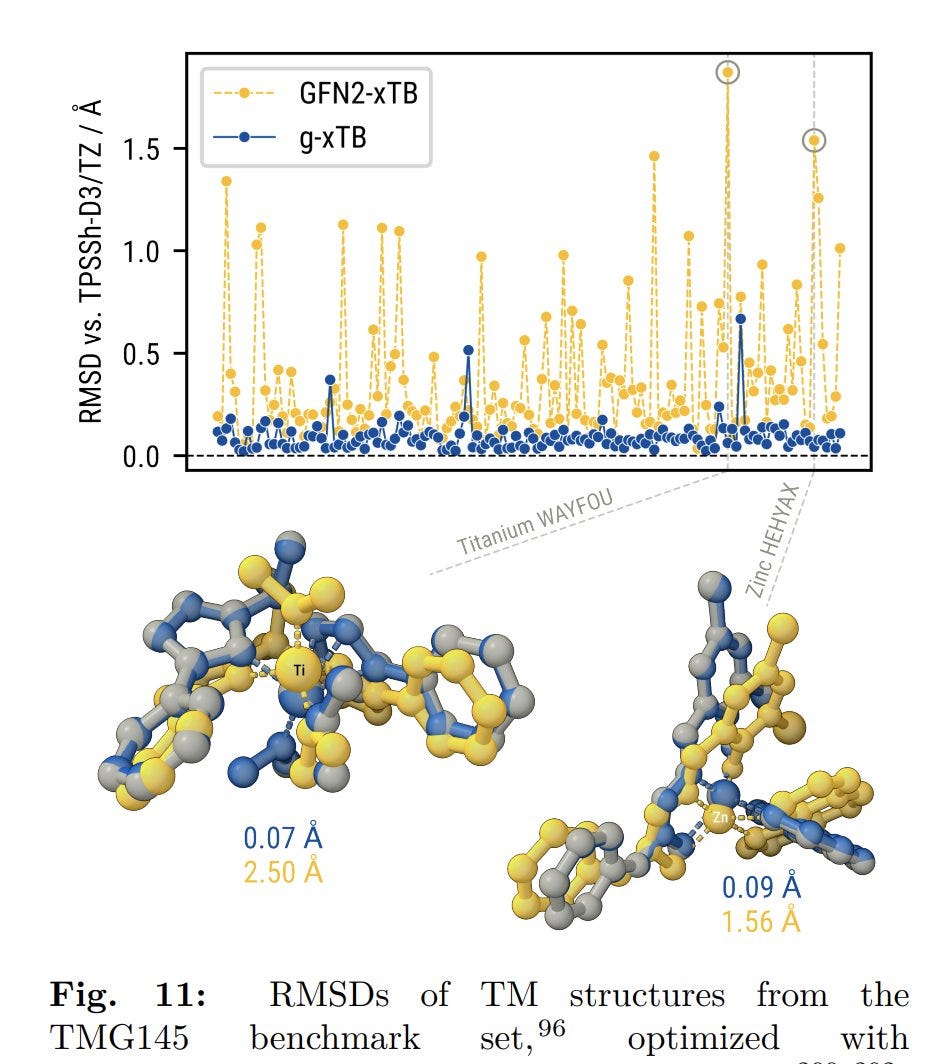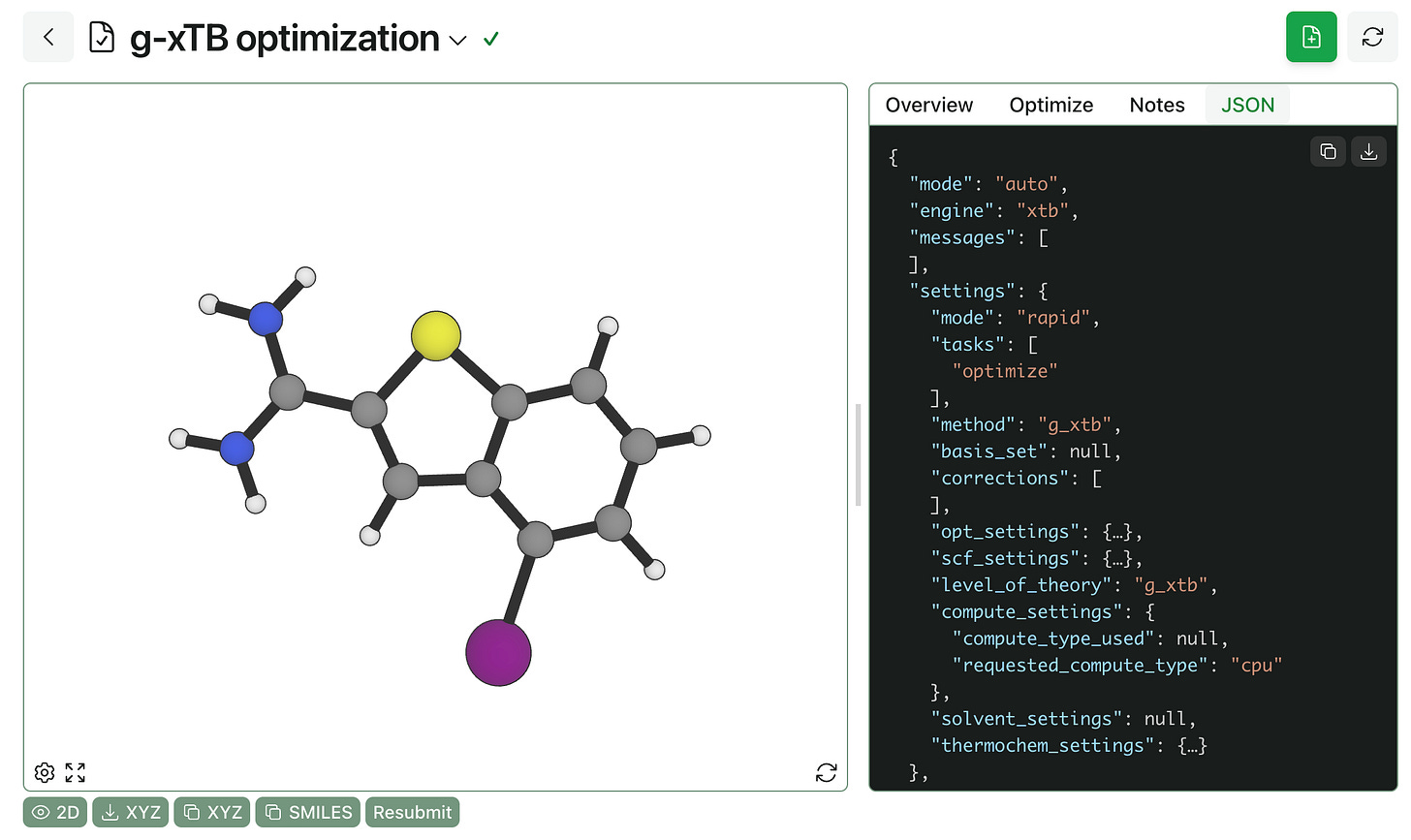g-xTB, Credit Usage, & More
the new g-xTB model from Grimme and co-workers; an easy visual overview of credit usage; better credit handling for organizations; bulk PDB download; a new collapsible JSON viewer
We launched a number of new updates on Rowan this week: some very exciting, others more prosaic (but still useful).
g-xTB
On Tuesday, Stefan Grimme and co-workers released g-xTB (ChemRxiv), the latest in the xTB family of low-cost semiempirical quantum-chemical methods. g-xTB has similar accuracy to typical low-cost DFT on a variety of benchmarks, predicts orbital energies and other electronic-structure properties (unlike a neural network potential), and is only a little bit more expensive than a typical GFN2-xTB calculation. (For more in-depth summaries, check out Corin’s thread on X or Jonathon’s LinkedIn post.)
It’s been possible to run g-xTB on Rowan since Tuesday night; we’ve already had a good number of users exploring how this new method fares for their systems. To try g-xTB, simply select “g-xTB” from the “Level of Theory” dropdown. (Note that the current release of g-xTB is a development release without analytical gradients or Hessians, so optimizations and frequencies are a bit slower than they will be in the final optimized release.)
Understanding Credit Usage
In last week’s newsletter, we wrote the following:
We’re working on building more tools to give our users visibility into their credit usage on our platform.
This week, we’re releasing the first of these tools—a detailed breakdown of credit usage by workflow and by time. Here’s what this looks like for my (Corin’s) last year of Rowan usage:
Each bar corresponds to a week, and the different colors correspond to different types of workflows—blue is calculation, green is bond-dissociation energy, and so on and so forth. This makes it easy to track credit usage over time and understand which sorts of calculations tend to consume the most compute.
You can find this view for your account on Rowan’s billing page.
Organization Credit Handling
In response to feedback from users working collaboratively through Rowan, we’re introducing credits tied to the organization level, letting everyone on a project share resources instead of juggling individual balances.
Here’s how the billing order works:
Your personal weekly credits will be used first.
Organization weekly credits will be used next.
Any additional credits (like the 500-credit sign-up bonus) will be spent last.
The specific number of organization-level weekly credits will depend on the details of your organization’s plan; you can check your balances anytime on Rowan’s aforementioned billing page.
Working on something that needs a different billing flow? Please let us what would make managing compute and spend easier.
Bulk PDB Download
Users can now download PDB files en masse rather than having to individually click “Download” from each calculation view. This will be handy when analyzing lots of Boltz-2 calculations, for instance. The new bulk download can be accessed from any compare view with one or more protein-containing jobs selected.
Workflow JSON View
When developing new functionality and troubleshooting issues, we often view the underlying data directly to figure out exactly what’s happening (as do many of our API users). To make this easier, we’ve added a JSON view to every workflow. In the JSON view, you can expand and collapse objects and lists by clicking on their encompassing curly or square brackets, making it easy to hide extraneous information.
We hope these changes make Rowan easier and faster to use. Until next time, happy computing!









